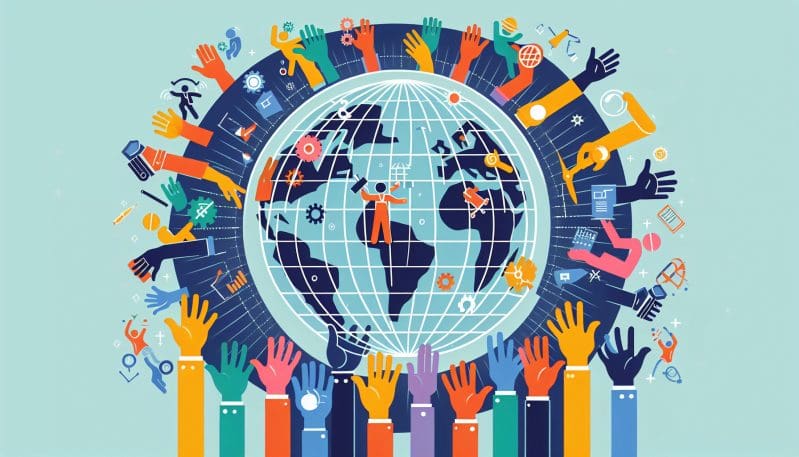Breaking Down Barriers: Empowering Workers with Disabilities in the Global Economy
- Home
- Breaking Down Barriers: Empowering Workers with Disabilities in the Global Economy
- Editors Desk
- January 19, 2024
- 0 Comments
In today’s global economy, it is imperative that all individuals have the opportunity to participate and contribute. However, workers with disabilities continue to face numerous barriers that prevent their full inclusion in the workforce. This blog post aims to shed light on these challenges and highlight the importance of creating inclusive workplaces that empower workers with disabilities.
One of the biggest barriers faced by workers with disabilities is the lack of accessible workplaces. Many physical environments, such as buildings and transportation systems, are not designed to accommodate individuals with disabilities. This not only limits their ability to access job opportunities but also hinders their overall productivity and well-being.
Another significant challenge is the prevalence of discriminatory attitudes and stereotypes towards people with disabilities. These negative perceptions often lead to biased hiring practices, unequal pay, and limited career advancement opportunities for individuals with disabilities. It is crucial for businesses and society as a whole to acknowledge and challenge these discriminatory practices.
Despite these challenges, there are organizations that have successfully implemented inclusive practices and policies. By prioritizing diversity and inclusion, these companies have created work environments that embrace the talents and abilities of all individuals, regardless of disability. These inclusive workplaces have not only improved productivity and innovation but also fostered a sense of belonging for all employees.
Governments also play a crucial role in removing barriers and promoting equal opportunities for workers with disabilities. Through legislation and policies, governments can enforce accessibility standards, provide financial incentives for inclusive hiring, and support disability rights advocacy. By creating an enabling environment, governments can encourage businesses to adopt inclusive practices and make disability inclusion a priority.
Technology also holds immense potential in creating accessible work environments and facilitating remote work options for individuals with disabilities. Assistive technologies, such as screen readers and adaptive software, can help level the playing field and enable individuals with disabilities to perform their jobs effectively. Remote work options further eliminate physical barriers and allow individuals to work from the comfort of their homes, maximizing their productivity and work-life balance.
In conclusion, it is crucial for all stakeholders – governments, businesses, and civil society – to prioritize disability inclusion and invest in programs that ensure no worker is left behind. By removing barriers, challenging stereotypes, and creating inclusive workplaces, we can harness the untapped potential of workers with disabilities. Let us work together to build a global economy that is truly inclusive and leaves no worker behind.


Leave A Comment